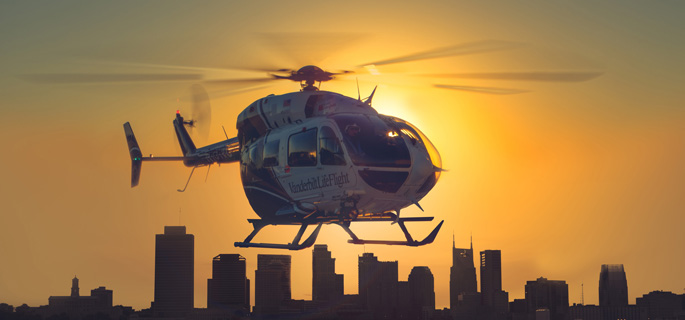
by Kylie Avery
To provide enhanced safety for Vanderbilt LifeFlight’s team and the patients they transport, the use of helium balloons outside is now prohibited on VUMC’s downtown campus. However, helium balloons are still permitted inside buildings.
“Landing and takeoff are critical phases of flight for pilots, requiring focus and precision. As innocuous as a balloon may seem, they can impede a pilot’s view causing them to have to quickly redirect the aircraft and disrupt those on board,” said Jon Thorp, Air Methods area manager.
“Balloons that get caught in helicopter rotors present an even greater hazard. If a balloon gets drawn into a rotor, it can create enough drag to unbalance the aircraft and create dangerous takeoff and landing conditions.”
Vanderbilt University Hospital’s rooftop helipad encounters approximately 10,000 incoming and departing flights each year.
“Because of the significant number of flights we see and the proximity to other helipads in the area near our campus, preventing helium balloons from interfering with flight operations assists in keeping our LifeFlight crew members and other pilots flying in the area safe,” said Kevin Nooner, MSN, RN, NE-BC, CMTE, director of Critical Care Transport.












